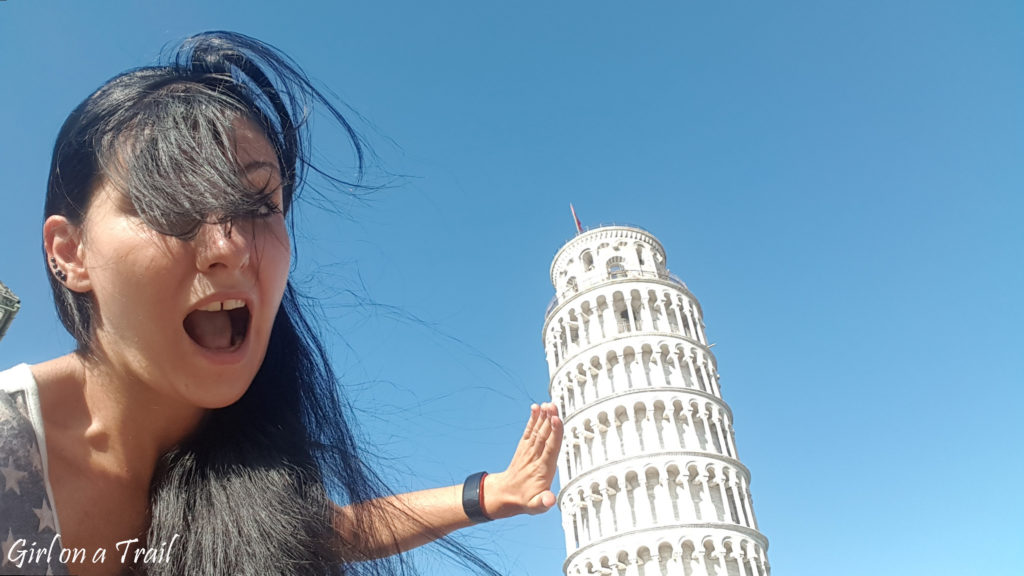The Leaning Tower in Pisa was a place I had wanted to see for a long time. Ultimately, in the summer of last year, I managed to make it happen. I had a bit of a mixed feelings about traveling to Italy during the COVID pandemic. I was especially afraid of typical tourist places, because Italy is a rather popular destination during the holiday season. Meanwhile, to my surprise, it turned out to be the safest trip I could have ever imagined. Pisa was practically depopulated, we easily parked the car near the Leaning Tower.



In the most important place – Piazza dei Miracoli, where there are four, most popular tourist points: the Leaning Tower, the Cathedral, the Baptistery and the Camposanto Monumentale Cemetery, there were virtually no tourists. On the other hand, a little more people could be found in numerous restaurants in the city centre.


We started sightseeing with the most important construction in Pisa – the Leaning Tower. Construction of the Leaning Tower of Pisa began in 1173 and took almost two centuries. In fact, the tower started tilting while being under construction. It was due to the shallow foundations and unstable ground.

It wasn’t until 1990 when the tilt of the tower reached 5°, immediate work was taken to protect it from collapse. It took 10 years to stabilize the Leaning Tower and consumed 30 million euros. During these works, foundations were strengthened and special weights were placed to move the centre of gravity of the tower. The tilt was lowered to 4° and the tower is available now for sightseeing.

Right next to the Leaning Tower, you can visit Santa Maria Assunta Cathedral, which is free of charge. Unfortunately, during my stay the sightseeing was limited.

Nearby, there’s also San Giovanni Baptistery, which was designed on the pattern of the Dome on the Rock in Jerusalem. The Baptistery is tilted, like the Leaning Tower. However, it’s virtually unnoticeable because it reaches only 0.6°.

Interestingly, it’s not the end of the tilted buildings you can see in Pisa. Characteristic tilt can also be seen when looking at the bell tower of the Church of San Nicola.

An interesting proposition for further sightseeing is a walk along the boulevard located by the Arno river. Here you can see an interesting panorama of the city and a small, richly decorated church – Santa Maria della Spina.


On the way back, take a walk along Borgo Stretto promenade. It starts with Piazza Garibaldi, located just next to Ponte di Mezzo – a characteristic bridge and ends with the ruins of the Roman baths – Terme Nerone.


It is a representative city street, where you can see many boutiques, restaurants and cafes.


On the way, don’t miss Piazza del Cavalieri – the former administrative centre of the city.

I must admit, that Pisa surprised me with a homely atmosphere, numerous narrow passages and interesting murals. It’s worth spending a bit more time here, to look at the locals’ life and see the city from a different, less tourist side.


Like this post? Check out another ones:
